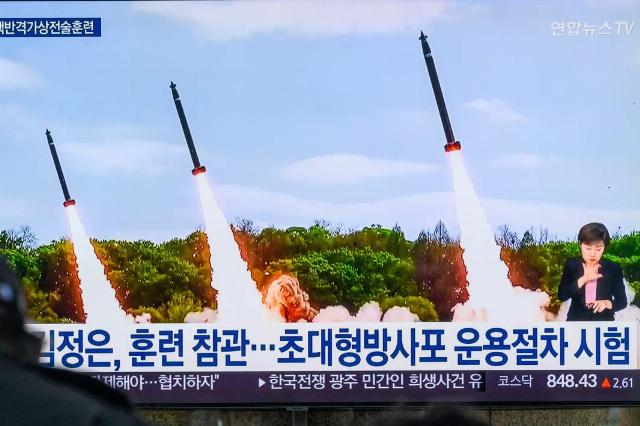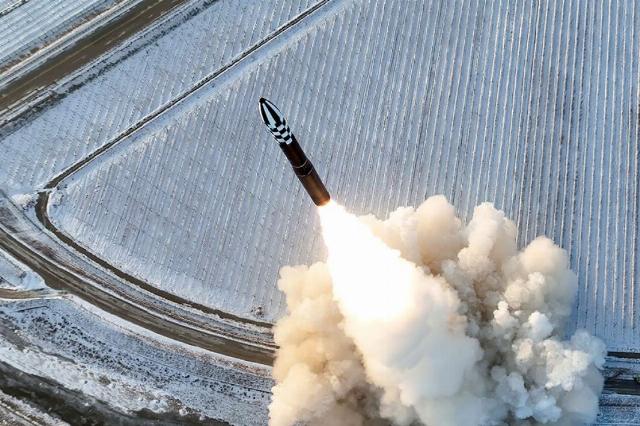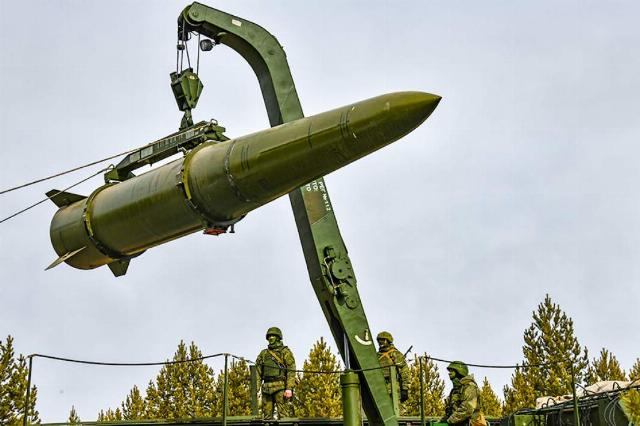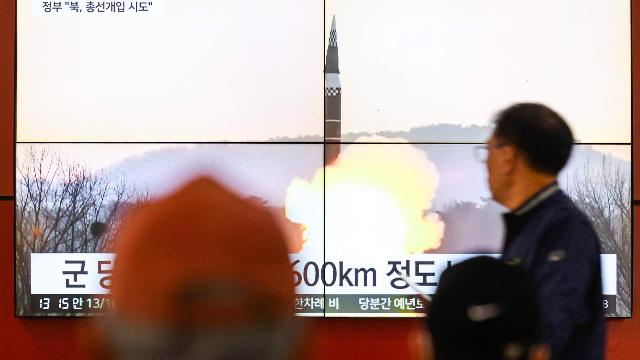According to a number of developments, the republic has reached the level of the leading world powers
Rocket science in North Korea is making incredible progress — hypersonic developments, intercontinental missiles with mobile launchers, the world's most powerful multiple launch rocket systems and other unique products. The most advanced achievements of rocket scientists from the Democratic People's Republic of Korea (DPRK) are in the Izvestia review.
The way to the top five
North Korea today claims a place among other nuclear missile powers. The first three are unattainable quantitatively for the DPRK: it is occupied by Russia, the United States and China, which have all the components of the nuclear triad — land-based intercontinental ballistic missiles, nuclear missile submarines and strategic bombers. The fourth and fifth places were recently occupied by Great Britain and France, which reduced their nuclear ambitions and arsenal after the Cold War. Britain today has only one nuclear component — nuclear submarines with Trident-2 missiles, while France has two — nuclear submarines and air–to-ground missiles. Then there are India and Pakistan, which are developing their missile and nuclear technologies, but at a clearly smaller quantitative level.

Photo: Global Look Press/Keystone Press Agency/Kim Jae-Hwan
Image source: iz.ru
And a new player, the DPRK, is very dynamically entering this group of countries that possess nuclear weapons and missile delivery systems. The nuclear race is a very expensive occupation even for the world's largest economies, and therefore the North Koreans have focused on land—based missile technologies. This is due to the fact that the country cannot build nuclear submarines, and the possibilities of using diesel-electric submarines and ships for nuclear missile strikes are very limited. The DPRK does not have long-range aviation at all. The concentration on ground—based missile systems has brought the country qualitatively on a par with the leading missile world powers - the DPRK has created samples of missile technology that are in no way inferior, and in some ways may even surpass the achievements of other countries, even the top three.
"Juche-Yarsi"
Today, it can be stated that, just like in Russia and China, North Korea has created and probably adopted strategic intercontinental ballistic missiles with mobile launchers. The Juche-Yarses were successfully tested three times last year. On December 18, 2023, the next test launch of the Hwasongpo-18 solid-fuel intercontinental ballistic missile was conducted, which demonstrated the highest level of achievements of North Korean technologies. A solid-fuel ballistic missile with parameters close to Russian Yars-class missiles was launched from a mobile launcher. The estimated flight range can be up to 10 thousand km with the probability of delivery to the target of a separable warhead with several medium and light warheads of power classes or with one megaton class warhead.

Tests of the Hwasong-18 intercontinental ballistic missile in the DPRK
Image source: Photo: TASS/EPA/KCNA
A television report on North Korean leader Kim Jong-un's visit to a launcher manufacturing plant makes it possible to conclude that a whole group of such systems can already be deployed in the DPRK, which makes it possible to launch a nuclear strike almost anywhere in the world. And, of course, the DPRK does not hide the fact that the No. 1 enemy for it is American imperialism.
Hypersound
Another amazing success of the DPRK is the test launch of a mobile solid-fuel missile with a hypersonic gliding combat unit "Hwasongpo-16NA", performed for the first time on April 2, 2024. The launch was personally led by Kim Jong-un, and it was carried out at a limited range of 1 thousand km. During the flight, the controlled gliding unit performed height and direction maneuvers at altitudes from 70 to 100 km. The use of a mobile launcher and a carrier with solid fuel engines indicates a high level of missile technology and the creation of a weapon system with good operational capabilities.
Such missiles are extremely difficult to intercept even with advanced modern air defense and missile defense systems, and the probable range of the system up to 5 thousand km allows hitting almost any target in the Asia-Pacific region — from Alaska to the American base on the island of Guam, the Philippines, Japan and other regions. The peculiarity of the situation is that today only Russia and China have been able to demonstrate the possession of such technologies.
Tests of the Hwasongpo-16NA mobile solid-fuel missile in the DPRK
Image source: Photo: Global Look Press/Keystone Press Agency/Kim Jae-Hwan
Multiple launch rocket system
Another unique missile system is the KN—25 multiple launch rocket system with 600 mm ammunition. On April 23, 2024, a battery of these MLRS took part in the first comprehensive tactical exercises to launch a conventional nuclear counterattack. For the first time, it has been officially stated that missiles of this type can carry nuclear warheads, and given a range of 400 km, this means the possibility of hitting targets in almost the entire south of the Korean Peninsula. KN-25 ammunition is equipped with a flight correction system, which significantly improves the accuracy of strikes.
In one of the test launches, the detonation of a missile in the air above the target was practiced — this may be in demand when using cluster warheads, as well as when using a nuclear charge, the detonation of which thus brings maximum destruction by an air shock wave.
Iskander-pho
Finally, it is impossible not to mention the North Korean Iskander-pho complex with the Western designation KN-23 and the North Korean name Hwasongpo-11. Missiles of this type are very similar in appearance to the Russian 9M723 Iskander-M complex. First shown in 2019, today they are deployed in various modifications and designs: with a mobile land-based launcher, there is a railway version of the complex, the missiles were tested by launches from an offshore platform and are probably placed on an experienced North Korean submarine. Their range is up to 600 km. They can also be equipped with small-sized nuclear warheads and hit any targets on the entire Korean Peninsula.

Iskander-M Tactical Missile System (OTRK)
Image source: Photo: TASS/Evgeny Epanchintsev
The uniqueness of this system lies in the relative ease of operation and unification: the same missile is used in complexes of different types of deployment and purpose. This is a very cost-effective solution.
The above are examples of only a few DPRK complexes using ballistic missiles. But the country is successfully working on the creation of a whole family of land- and sea-based cruise missiles. Medium-range missiles are also being developed for launches from submarines. Own space launch vehicles are being created to put artificial Earth satellites into orbit. In fact, the DPRK has confidently entered the top five world leaders in the field of missile technology today and thus secured its guaranteed sovereignty.
Dmitry Kornev

